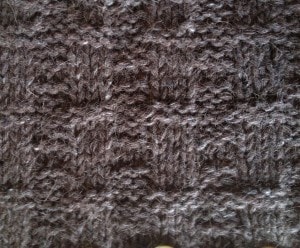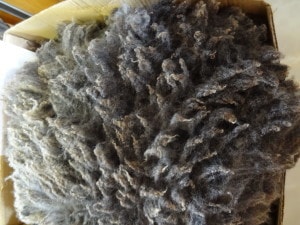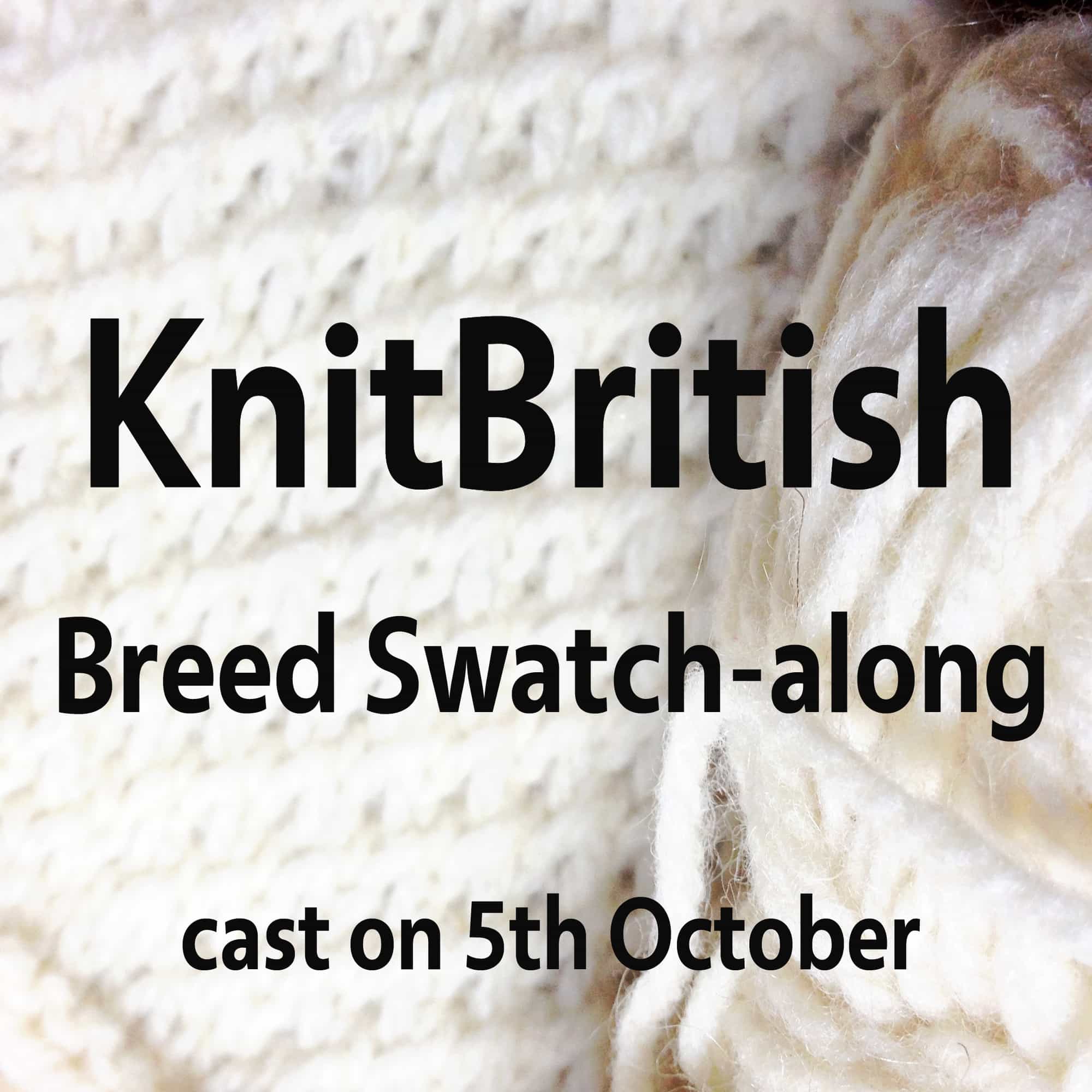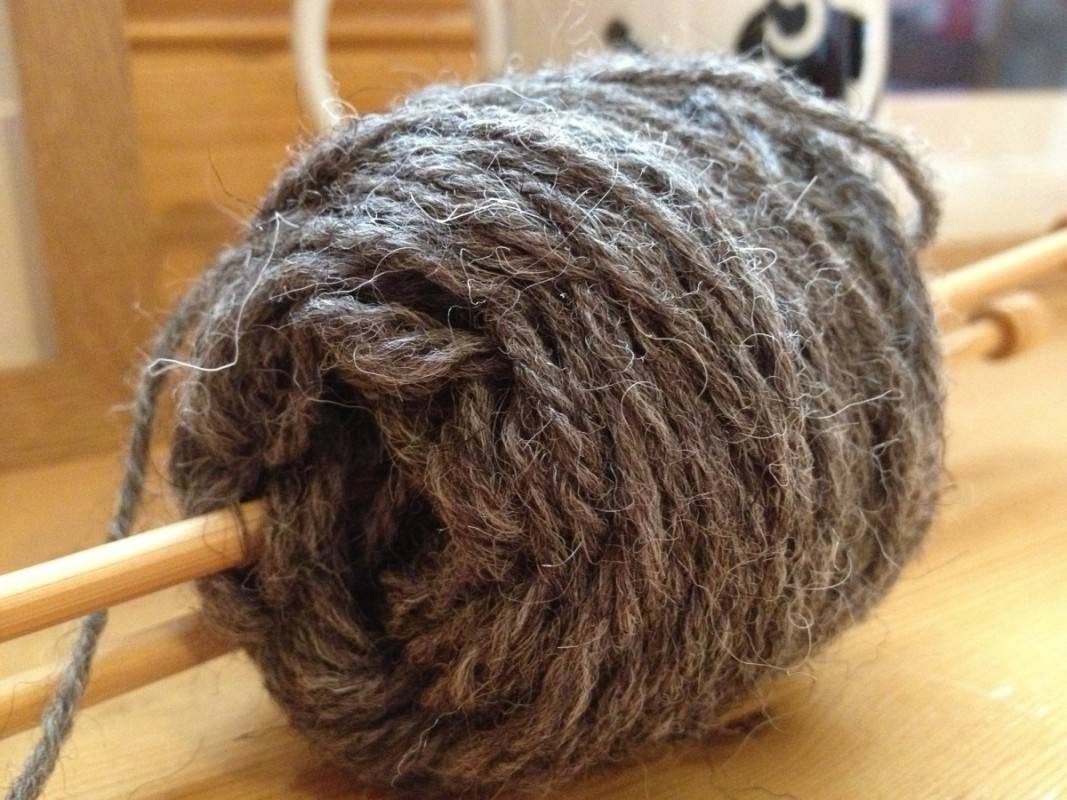As promised here is an info post for any questions you may have about the Breed Swatchalong.

| What are we doing?
Using British breed wool, or wool from our local area, we will be knitting a square swatch and noting observances each stage of the knitting process from fibre, where applicable, from skein to square. This swatchalong is about celebrating the natural textures, colours and characteristics of single breed wool.
| What are the rules?
– Your wool needs to be British breed wool from the British isles (KnitBritish)
OR
– any breed wool that is local to you, including British breeds which are located outside the British isles (KnitLocal).
– wool must be single breed – no blended wools or man-made fibres;
– wool must be un-dyed – the natural colour is just one of the characteristics we shall be exploring;
– wool must not be superwash – superwash is a treatment and therefore not a natural characteristic;
– you may knit or crochet any weight of yarn;
– you may use any stitch pattern – choose one you think may show off the yarn qualities best;
– your swatch should be no smaller than 8 inches
– cast on is 5th October;
– there are LOTS of sheep breeds so there is no definite cast off date;
– you may knit as many swatches as you like in this KAL, but to ensure you give each swatch the focus it deserves perhaps enter one FO at a time, rather than multi-swatching at one time.
Unofficial rule – Be adventurous! Try finding a breed that you have never used before or haven’t wanted to use before, for whatever reason.
| Why is the difference between KnitBritish and KnitLocal?
There will be two finished object threads in the KnitBritish Ravelry group; one is called KnitBritish and the other KnitLocal. To know where to post please use the following guidelines;
- Wherever you live, if you used British breed wool from the UK you would post your review and swatch image in the KnitBritish FO thread.
- If you live outside the UK and are using sheep breeds which are local to your region (or state or country – I shan’t be too fastidious about the notion of local) you will post your FO in the Knitlocal FO Thread.
- If you live outside the UK and you have access to breed wool which is considered British breed – you would post in the KnitLocal FO thread.
One of the main reasons for this delineation is that we want to celebrate wool from the UK and wool that is local to you, wherever you are in the world. However, I also think that there is a difference between British breed wool from the UK and the same breeds found in, say, North America. A Shetland sheep from Shetland may have very different wool characteristics to a Shetland sheep bred in up-state New York.
Our images will be collated into two virtual blankets from each thread and these will be a pictorial celebration of the wool available from sheep in the British Isles and also a more global blanket from our KnitLocal swatches.
| How do I choose my wool?
Where British breeds are concerned I have used the wool categories from the British Wool Marketing Board to give us a model, they categorise the wool rather than the sheep breeds. I am quite sure any model would be open to interpretation (lets face it, all sheep are naturally coloured…etc) but this is the structure we will use. You can view the categories and sheep on a pdf.
Download PDF: wool categories.
There are some sheep which we consider the long term lodgers of Britain and they are not categorised by BWBM yet. We will keep a list of these waifs and strays too, perhaps the BWMB will think about categorising them! Do earburn me if your chosen wool is not categorised.
For those of you who are knitting the wool that is local to you then you are the detective and explorer! The more information you can find out about your wool and the breed it comes from; we would love to know.
Also remember that we can’t be too pedantic about “local” – what is local to you can be down the road, or from the general region or country you live in.
To be brutally honest I am not sure what to do about very new sheep to the UK – such as the Valais Blacknose – I suggest posting these in the KnitLocal thread, but its a tricky one. This is a journey of woolly discovery though and we can cross that bridge when we get to it.
| Where should I buy my wool or fibre?

I have a few pinterest boards which may offer some inspiration and suggestion when it comes to choosing your wool. None of them guarantee stock though. Why not check your local area for small producers and mills and see if you can also support these in the swatch-along. Do you have sheep farms local to you? Perhaps you can ask for some fleece.
| Where do I sign up and chat?
There is a chat thread over at the KnitBritish thread. Go over there and tell us which single breed wools you want to discover in this swatch-along. There is already a lot of chatter!
| How do I test-drive my yarn?
There is a pdf of the test-drive field notes (see below)and you should use these to help shape your review. We are looking beyond the ball of yarn that we all squish in the shop and hopefully discovering far more than that hand-squish-grab can tell us. Keep a notebook with you for each step of the test-drive.
Download PDF: test drive notes
If you are spinning your yarn there are other observances that you will need to add.
| Where do I post my review?
1. Create a new Ravelry project for each swatch. Upload all of your swatch pictures and post your test-drive findings in the notes. If you have chosen to blog about your findings you can post a link in the notes instead. Tag your project with breedswatchalong
2. Go to the relevant FO Thread (as discussed above); post a close up picture of your finished swatch. it should be as flat as possible an we should see all of the swatch. Link to your project notes. Write a short KEYWORD summary in the FO thread and include – Breed; Weight; Stitch pattern used; Initial thoughts on feel and use; Observances on final swatch. You can see an example here and can see my full test drive here.
By keeping the full reviews to project pages it keeps the FO thread from becoming unweildy (Also good project page notes can be very helpful to other knitters!) A summary is nicer to read within a thread and you will be linking back to your review in your projects.

| How will our swatch-along contribute to a wider understanding of breed wool?
This will happen in a number of ways! Firstly, as a community we are going on this woolly exploration together and undoubtedly we will learn so much about our local wool and British breeds.
Your swatch will be on Ravelry and your project notes will be available on Ravelry for anyone to read. In test-driving these wools you may eventually help other knitters decide to give the same wool a try.
I will be sharing your swatch images and some of your summaries on Wovember, this November. Wovember is a celebration of wool and committed to 100% wool appreciation. Your reviews there will again contribute to a deeper understanding of what our great British and local breed yarns are like to work with and will promote (or otherwise!) their use to other crafters on another platform.
When the KAL is over (date tbc) I will make summary reviews of all British breed wools available on KnitBritish so that anyone searching for information on breed wool can find thorough reviews in one place. What we are going to discover together truly will be on value and interest to others!
I hope this has answered any questions you have and you are as excited as I am to get casting on and learning more about WOOL!

| The Small Print – by taking part in the swatch-along you understand that your swatch images and parts of your review will be published or collated on the Wovember and KnitBritish websites. When used in these instances the copyright will be asserted as yours and link back to you on Ravelry. Where information is collated for summary reviews, all reviewers will be cited.



Wow, the picture at the top looks like my Herdwick that I just finished making a heavy duty outdoors sweater with. I just got a Hebridean fleece from Kate Graham and am anxious to get on it! What are you going to do with yours? I am in the states so won’t participate but am really looking foreward to your post on the swatches. Cheers!!
Louise, have you contacted Deb Robson about this project? I would suggest that you email her or contact her through her blog to let her know that we are doing this and to send her the link to this blog post. I think that this effort would be of great interest to her.
Thanks to Laura Sue for the note above, and to Gretchen Frederick of Solitude Wools for pointing me over here.
I have BOXES of swatches, and no time to document them until . . . well, I’m not sure when. I use the swatches as learning and teaching aids. I have two sets–one consists of ~ 4″ (10cm) squares in stockinette with either garter or seed-stitch borders. The other is ~ 6-8″ (15-20cm) squares, each wool in a different stitch pattern. In fact, if you’ve been talking with Sue Blacker of Blacker Designs, there’s a good chance that that’s one of my swatches at the top of this post and that it’s Sue’s wool. I don’t have time to dig through right now and find out which one, but for the sturdier wools in DK-through-aran weights, I frequently use stitch patterns like that (and Sue has permission to use some photos I sent her).
This is a fantastic project, and will be SO much fun for everyone. Note that the breed has an enormous amount to do with the feel of the yarn–say, 2/3–and the processing also does (the other 1/3): how the fiber has been scoured, to what grist the singles have been spun, what levels of twist have been put in, how many plies, and so on. In other words, it can be a delight to, say, pick a breed and find a lot of different versions and knit them for comparisons.
I could go on. This type of swatching can be slightly addictive. And if you label your swatches (I use string tags in the lower right corner, as seen from the front), you’ll have a library of delight to refer to.
thank you so much Deb! I had sent you an email about the SAL too and I’m so pleased others have pointed you here.
This kind of swatching is addictive and what we learn is also addictive. I love that participants are using the same breeds but discovering that due to spin, or ply there are big differences. what a compare and contrast!
Thanks so much for your encouragement. I know lots of out swatchalongers took your craftsy class and it has been such a wonderful resource for so many.
oh, and the top swatch?….it was for a cowl I made. The cowl got ripped but the swatch remains!
Lx
Louise, I may have gotten your e-mail–or not. When I travel to teach (which has been a lot in recent months), sometimes things get lost, both coming and going from the accounts. I’m glad the collective effort got me notified.
The top swatch: I’m laughing. You have great taste in sampling stitches {grin}. I actually *did* pull my box of swatches and spend a couple of minutes trying to figure out which one it might have been, and came up with half-a-dozen “close but not precisely right” candidates. If I had time to take a picture and could attach it, you’d grin at what you saw. Sue Blacker does have a bunch of images of swatches I made with her yarns, so it was quite possible.
haha! But I would have credited you, of course! I have just been using some of Sue’s images for an upcoming post on swatching for WOVEMBER. I do love that Blacker include a good quality, close up image of a knitted swatch for each yarn they sell. It bridges a big gap for consumers, when we can’t squish yarn over the web, or have an initial idea of how it feels or will look.
Not to worry about the email – I seem to remember having an similar issue when emailing you over the Vintage Shetland Blog tour – I am quite sure lots of emails, like lost socks, are floating about in the dryer in the ether!
The swatch is actually in a commercial, dyed yarn, but I loved the stitch so much and what it meant to me as a swatch that I had to use it.
[…] those who missed it I published a FAQ post this week on the Swatchalong and there will be a short episode of the podcast out tomorrow with similar […]
[…] Karen Templer’s clever Slow Fashion October at Fringeassociation and Louise Scollay’s BreedSwatchalong at KnitBritish. Two undertakings that are at the core of the route my knitting journey has been […]
[…] am participating at the Knitbritish Breedswatchalong, and it’s coming along great! Beautiful knitting, lots of learning, and possibly even a new […]
Interesting contribution from Deborah Robson. What is the meaning of ‘the grist put into the singles’? I understand all the other variables described, and it is helpful to know that they determine as much as a third to final yarn produced.
Sorry, I got that wrong. ‘To what grist the singles have been spun’ is what Deborah said.
How thick or thin they are!
Thank you, Deborah!
I am really loving everything about this SAL, and Movember, and all the related blogs and websites I have been finding! Thank you so much. I have just come back to knitting after quite a few desultory years in the wilderness, and have been thrilled to discover how the web and social media have changed the entire knitting landscape.
One question, please: why is Herdwick (my long term favourite) not featured on the wool categories pdf?
[…] I talk about the Knit British Podcast and the Breed Swatch Along […]
[…] – definitions taken from the KnitBritish website here […]